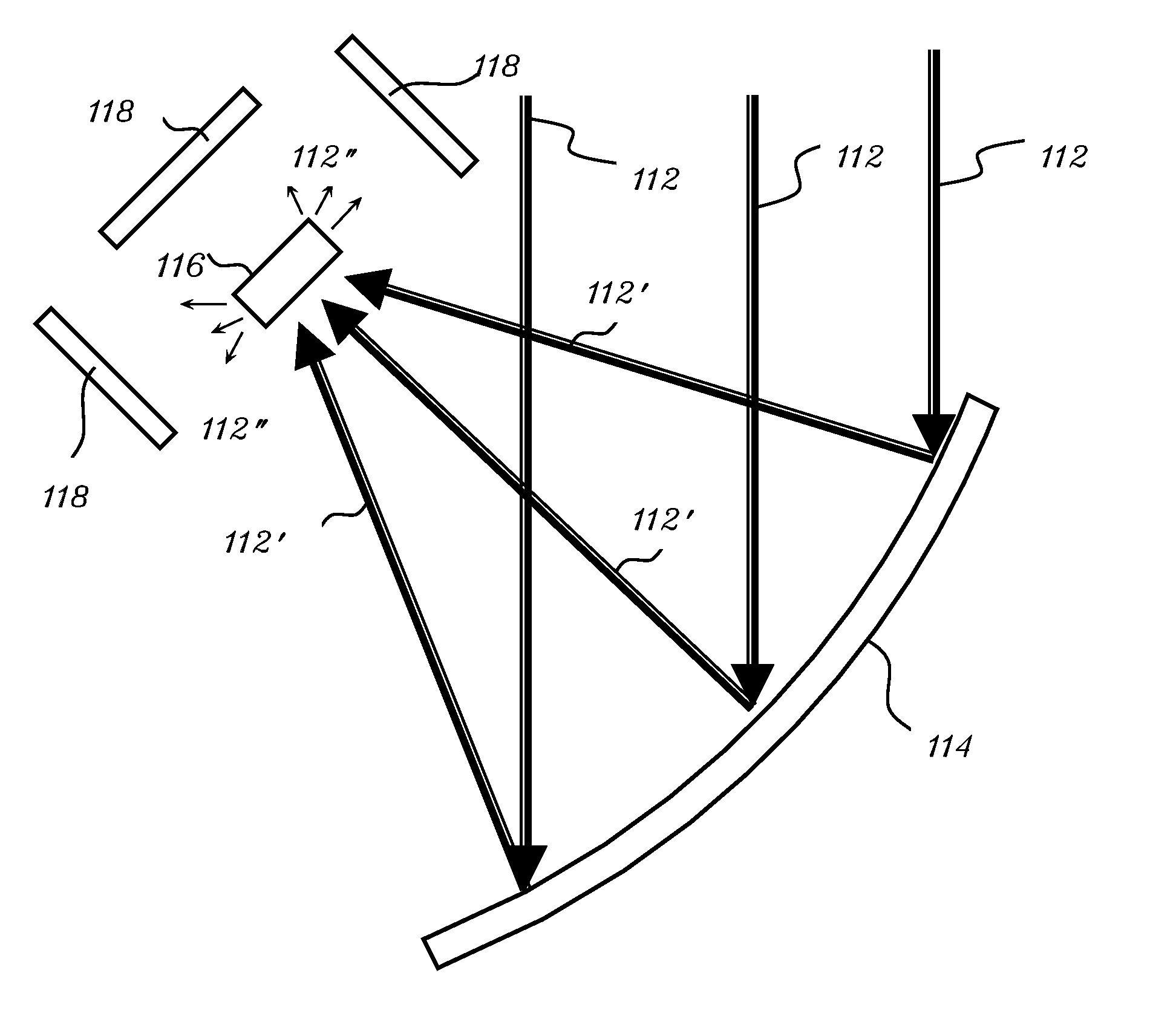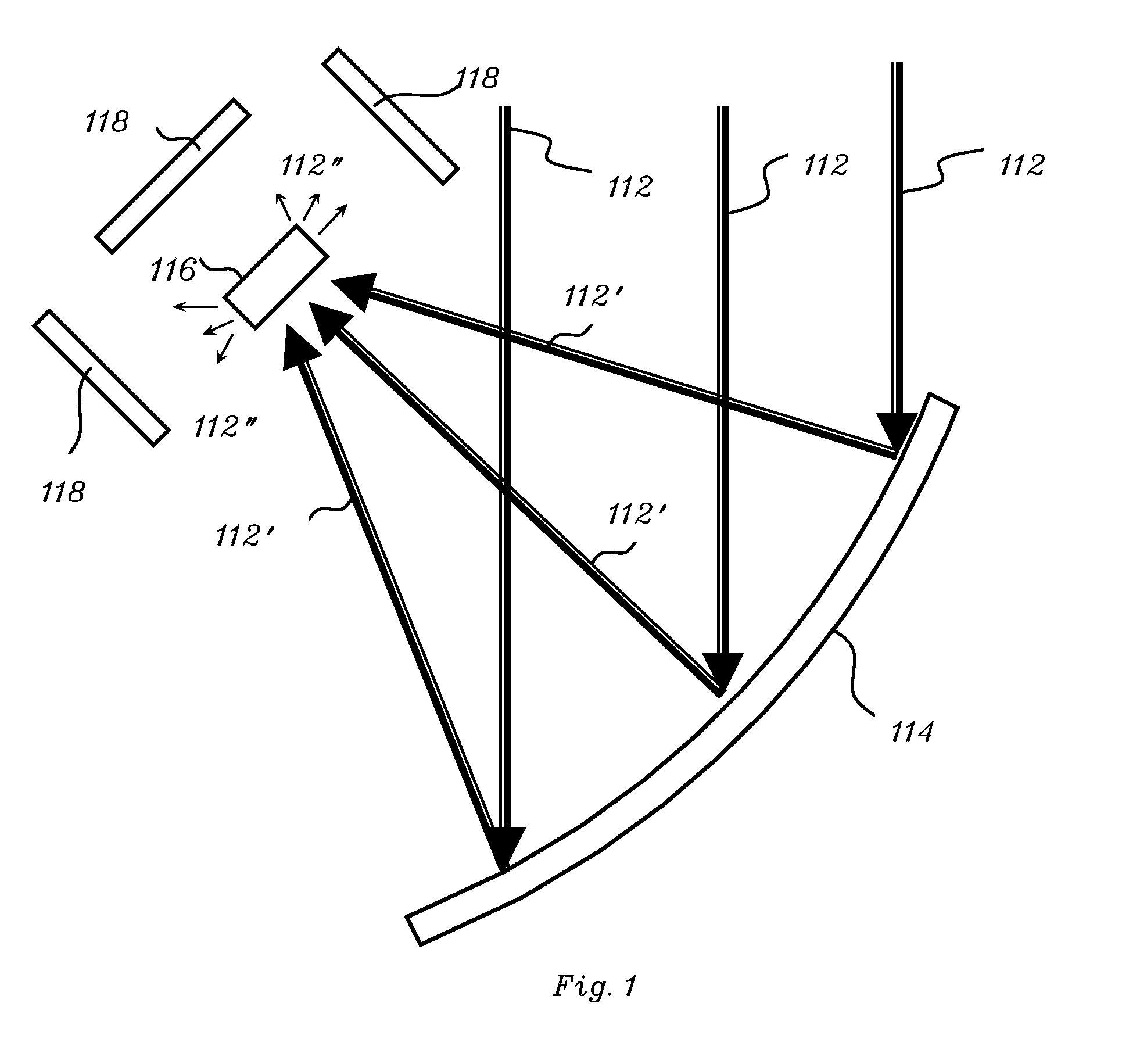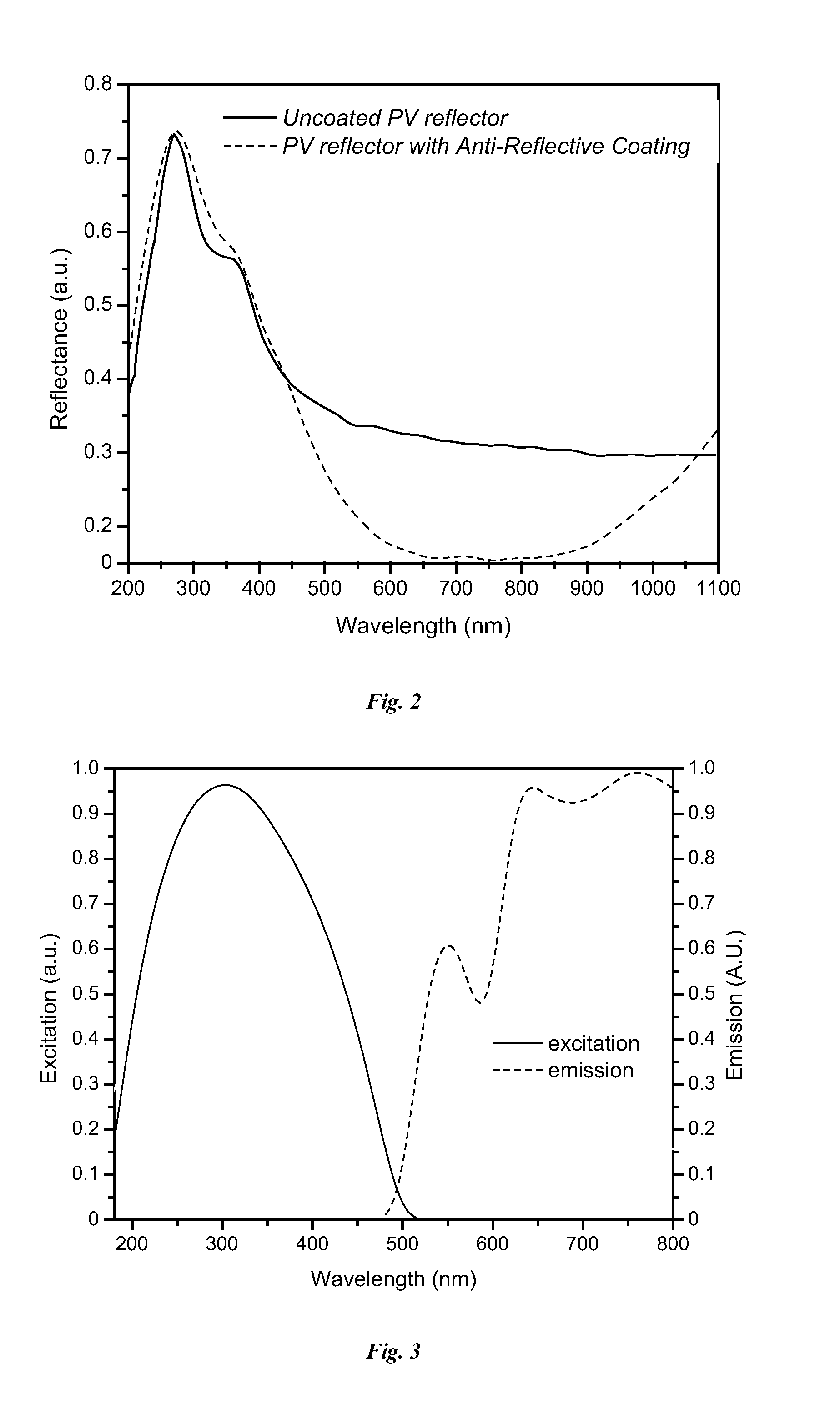Spectrum-splitting and wavelength-shifting photovoltaic energy converting system suitable for direct and diffuse solar irradiation
- Summary
- Abstract
- Description
- Claims
- Application Information
AI Technical Summary
Benefits of technology
Problems solved by technology
Method used
Image
Examples
Embodiment Construction
[0033]An energy converting system includes: (a) first means for receiving incident solar radiation, converting to electricity those photons of said incident solar radiation having energies less than a predetermined bandgap energy, and reflecting reflected photons having energies greater than said predetermined bandgap; (b) second means for producing, in response to said reflected photons, wavelength-shifted photons having energies less than said predetermined bandgap energy; and (c) third means for converting into electricity said wavelength-shifted photons.
[0034]Referring to FIG. 1, the system according to a first embodiment of the invention is illustrated. The system illustrated in FIG. 1 relates to solar collectors, specifically to solar electromagnetic radiation concentrators that allow users to convert diffuse and direct solar radiation into more useful forms of energy by employment of both spectral splitting and redirecting of incoming solar radiation towards points of more ef...
PUM
 Login to View More
Login to View More Abstract
Description
Claims
Application Information
 Login to View More
Login to View More - R&D
- Intellectual Property
- Life Sciences
- Materials
- Tech Scout
- Unparalleled Data Quality
- Higher Quality Content
- 60% Fewer Hallucinations
Browse by: Latest US Patents, China's latest patents, Technical Efficacy Thesaurus, Application Domain, Technology Topic, Popular Technical Reports.
© 2025 PatSnap. All rights reserved.Legal|Privacy policy|Modern Slavery Act Transparency Statement|Sitemap|About US| Contact US: help@patsnap.com



